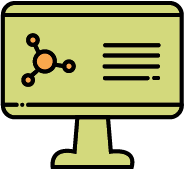Offload monotonous tasks and spend more time doing what you’re uniquely gifted to do.
Isn’t it time you hired a digital workforce?

Automate rules-based processes. Reduce human error.
Do it all through Robotic Process Automation (RPA).
What is RPA?
Sure, we all love the idea of WALL-E and C3PO, but that doesn’t mean that we want a robot running around the office, offering opinions and taking over jobs for human employees. Don’t worry: your digital bots won’t give opinions or debate directions. And sadly, RPA bots are much less sexy that C3PO. Instead, think of an RPA bot as something that sits in the cloud and runs business-rules-based processes over and over again … you know, without needing sleep or breaks or making mistakes.
Robotic Process Automation (RPA) is a way to delegate labor-intensive, repetitive rules-based computer tasks to digital bots, freeing up the human workforce to solve problems, innovate, and strategize. Not only can RPA bots complete mundane tasks around the clock, they can learn. They can be cloned. They can interact with almost any system or application or website the same way you do, as long as the process follows business rules.
How Can an RPA Bot Help with Customer Service?

7 Benefits of Using RPA
1. Reduced Cost.
![]() Though there are certainly upfront costs associated with RPA, the savings is potentially huge. RPA bots are much less expensive than full-time employees. On a task-by-task basis, an RPA bot saves a business significantly, and this costs savings is multiplied as the software works longer hours (basically all of them) at a lower cost.
Though there are certainly upfront costs associated with RPA, the savings is potentially huge. RPA bots are much less expensive than full-time employees. On a task-by-task basis, an RPA bot saves a business significantly, and this costs savings is multiplied as the software works longer hours (basically all of them) at a lower cost.
2. Better Use of Human Resources.
![]() Let humans do the things only humans can do, and outsource your repetitive tasks to a digital resource. Think of the kind of strategic problem solving your human team could do if they weren’t mired down by monotonous tasks!
Let humans do the things only humans can do, and outsource your repetitive tasks to a digital resource. Think of the kind of strategic problem solving your human team could do if they weren’t mired down by monotonous tasks!
3. Better Accuracy.
![]() RPA eliminates human errors due to things like tiredness or just plain mistakes. RPA bots are programmed to do the exact same task the exact same way EVERY. SINGLE. TIME. They never need a break, they never have an off day, and they never make mistakes before they finish their morning coffee.
RPA eliminates human errors due to things like tiredness or just plain mistakes. RPA bots are programmed to do the exact same task the exact same way EVERY. SINGLE. TIME. They never need a break, they never have an off day, and they never make mistakes before they finish their morning coffee.
4. Work With Legacy Systems.
 Don’t have the budget to update software? A bot can easily interact with legacy and out-dated software products that will drive human resources CRAZY. If an old system runs slowly, optimize data entry by keeping a resource working around the clock.
Don’t have the budget to update software? A bot can easily interact with legacy and out-dated software products that will drive human resources CRAZY. If an old system runs slowly, optimize data entry by keeping a resource working around the clock.
5. Quick Implementation.
![]() Setting up workflows for bots is usually a fairly quick process, and certainly quicker than training a new person. The new bot can often be set up a in as little as a few days, as opposed to sorting through resumes, scheduling interviews, and going through a hiring process.
Setting up workflows for bots is usually a fairly quick process, and certainly quicker than training a new person. The new bot can often be set up a in as little as a few days, as opposed to sorting through resumes, scheduling interviews, and going through a hiring process.
6. No Down-Time.
![]() Bots don’t sleep, and they don’t need bathroom breaks. In other words, they work all the time -– 24 hours a day, 365 days per year, at 100% capacity. At minimum, a bot can do three times as much work as a human worker, just due to the available hours.
Bots don’t sleep, and they don’t need bathroom breaks. In other words, they work all the time -– 24 hours a day, 365 days per year, at 100% capacity. At minimum, a bot can do three times as much work as a human worker, just due to the available hours.
7. Flexibility.
![]() Supplement your full-time team ONLY during the parts of the year in which many repetitive tasks need to be accomplished. Avoid costly contractor prices and spin up a new bot instead. Grow and shrink your team easily and as needed.
Supplement your full-time team ONLY during the parts of the year in which many repetitive tasks need to be accomplished. Avoid costly contractor prices and spin up a new bot instead. Grow and shrink your team easily and as needed.
